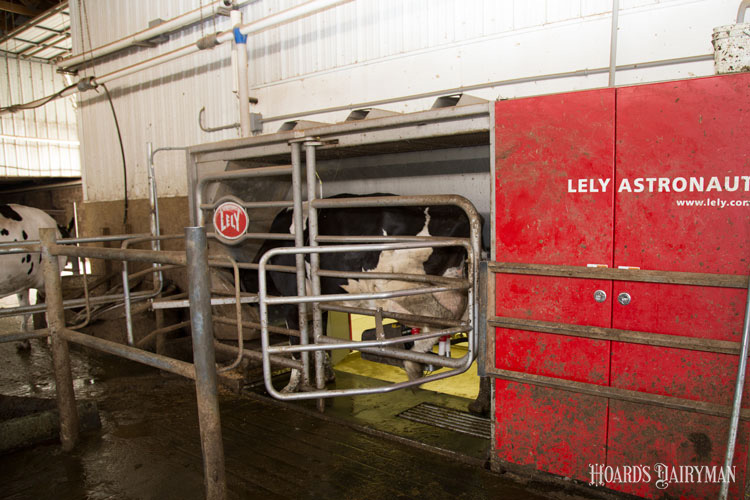
“The feeding strategy will vary depending on producer goals, so a whole system approach is important,” shared Marcia Endres during a recent presentation at the Tri-State Dairy Nutrition Conference.
The University of Minnesota researcher outlined tips her team has learned while working with rations on dairies with automatic milking systems. Like with any decision on the farm, Endres explained that finding the correct ration required understanding the farm and its goals.
Some general guidelines, however, shed light on the importance of feeding factors on the frequency with which cows go to the robots. Those who work with robots will tell you that higher milking frequencies are linked to strong milk production numbers.
The first of Endres’ recommendations was to feed a pellet in the robot as opposed to a meal. “With our herds, we see 4 pounds less milk per cow per day on a meal. Also, fewer visits and fewer milkings,” she explained.
Secondly, she reminded attendees of the importance of that pellet in the robot being high quality. In Minnesota’s research, 16 percent of cows had to be fetched on farms that fed a low-quality pellet in comparison to 7 percent on farms with a high-quality pellet.
A third suggestion was to pay great attention to the balance between energy in the partial mixed ration and energy provided in the robot. Endres said this was one of the most difficult balances to find.
“When it comes to feeding cows in robots, if you do it correctly, you can really make a difference on farms,” she said. Tailoring the strategy to the farm is the first step in this direction.








